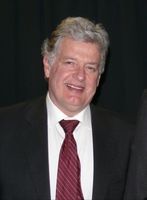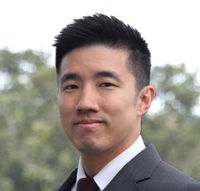Taranaki > Public Hospital Services > Te Whatu Ora – Health New Zealand Taranaki >
Orthopaedic Services| Taranaki | Te Whatu Ora
Public Service, Orthopaedics
Description
If you need to be checked, treated or need surgery for an issue with your bones, joints or muscles, you may be referred to the Orthopaedic Team.
What is Orthopaedics?
Orthopaedics is a field of surgery that specialises in diagnosing and treating problems with your bones, joints, ligaments, tendons, muscles and nerves (your musculoskeletal system). The specialty covers a range of different types of conditions and cares for people from all ages; from newborns with congenital conditions (conditions which children are born with) through to degenerative conditions of old age such as arthritis. Orthopaedic surgery also deals with trauma i.e. injuries or fractures (broken bones) that are sustained as the result of an accident.
Where to find us
The Orthopaedics Outpatient Service is located in the Surgical Outpatients Department. This is on the ground floor of the building to the right as you come in the Maternity entrance.
Consultants
-

Mr Andrew Glenny
Orthopaedic Surgeon
-

Mr Simon Hadlow
Orthopaedic Surgeon
-
Mr Ritwik Kejriwal
Orthopaedic Surgeon
-

Mr Charlie Lewis
Orthopaedic Surgeon
-

Mr Timothy Lynskey
Orthopaedic Surgeon
-

Mr Salil Pandit
Orthopaedic Surgeon
-

Mr John Pennington
Head of Department - Orthopaedics / Orthopaedic Surgeon
-

Mr Francis Ting
Orthopaedic Surgeon
How do I access this service?
Referral
Access to this service is by General Practitioner or Specialist referral only
Referral Expectations
Your General Practitioner (GP) will refer you to one of our clinics if they are concerned about your bones or joints and want a specialist opinion.
If you have an urgent problem requiring immediate orthopaedic assessment, you will be referred to the Te Whatu Ora, Taranaki Emergency Department where you will initially be seen by the registrar (trainee specialist). Investigations will be performed as required, and the more senior members of the team will be involved where necessary.
If the problem is non-urgent, the GP will refer you to the Orthopaedic Department, Te Whatu Ora, Taranaki requesting an appointment in the orthopaedic outpatient clinic. Each month the department receives more referrals than can be seen in clinic. One of the orthopaedic consultants working in the department reviews these referrals to determine who should be seen first and is based on the information provided by the GP. Urgent cases are usually seen within four weeks, but other cases may have to wait longer.
The First Specialist Appointment
After you have been to your GP and they have referred you to see a specialist for your treatment and you have been accepted into the service you will have to come for what is called a ‘First Specialist Appointment’ (FSA).
At the clinic appointment, you will meet a surgeon and he/she will consider your condition, how it impacts your life and your health status at the time to decide whether an operation will help you, and its urgency. In some instances, straight before you leave, you may also see a nurse, who will give you some information about your impending operation and a number of informative brochures that we ask you to read through thoroughly.
After you have seen the specialist and if you have been accepted for surgery, you will be asked to complete a questionnaire form about your current health status, which will be used to determine if you are well enough to have a general anaesthetic, if required.
In some circumstances, you may be asked to come back for an appointment for a pre-surgical assessment (undertaken by a nurse) and to meet your anaesthetist (doctor who puts you to sleep). You will receive a subsequent appointment by mail from our team if this is required.
If you are asked to attend a first specialist assessment, pre-surgical assessment or an anaesthetic appointment you will need to bring:
- All medicines you are taking including herbal and natural remedies.
- Your pharmaceutical entitlement card.
- Your ACC number, if you have one.
- Any clinical information that you already have that may be helpful for the specialist.
Someone to speak to
It can be quite a stressful time preparing for an operation in hospital, so we have a small team of nurses called Pre-Admission Nurses who oversee your journey from when you are confirmed as requiring surgery, until your surgery date. They are responsible for following up on results and managing referrals to other services for you, within the Te Whatu Ora, Taranaki Hospital if required.
The Pre-Admission Nurses work Monday to Friday between 08.00am and 4.30pm and they can be contacted on the following number: 06 7536139 extensions 8286 or 7176.
One of our Pre-Admission Nurses will make contact if you have any blood or urine results that need to be followed up prior to your surgery.
What happens on the day of surgery?
On the day of surgery, we ask that you follow these simple five steps to ensure everything goes smoothly on the day:
- Follow the instructions given to you regarding eating and drinking times and your medication rules. If in doubt, please give us a call - THIS IS VERY IMPORTANT.
- Cutting or grazing your skin on or near your surgery site may lead to your surgery being cancelled on the day, so please don't shave the area near to your surgery site, if applicable.
- Please have a shower and wash your hair, prior to coming into hospital. Do not wear talcum powder, perfume, aftershave, creams/moisturisers, makeup or nail varnish and do not wear any jewellery, other than a simple wedding band if necessary.
- Please try to wear warm and comfy clothes when you travel to the hospital, so you are as warm as possible right up to your operation time.
- Please allow plenty of time for travelling into hospital. It’s better to arrive earlier, rather than later.
Fees and Charges Description
New Zealand citizens or those who have obtained permanent residence are entitled to publicly funded health care.
Non-residents may be required to pay for their health care.
Hours
Surgical Outpatients
Monday - Friday: 8:00AM - 4:30PM
PACU 2:
Monday - Friday: 7:00AM - 6:30PM
Procedures / Treatments
These clinics are run by most orthopaedic departments for patients that have sustained an injury that has already been treated and further follow-up of that injury is required to monitor progress of a healing bone, check the position of the bone in a cast and to decide when other steps in management such as re-manipulation of fracture, removal of a cast or change of the management plan is required. Often at these fracture clinics x-rays are taken on arrival. Although an appointment time is given the time to have x-rays, casts removed, other treatments instigated may take several hours. Other appointments will be quick and efficient if these other procedures are not needed.
These clinics are run by most orthopaedic departments for patients that have sustained an injury that has already been treated and further follow-up of that injury is required to monitor progress of a healing bone, check the position of the bone in a cast and to decide when other steps in management such as re-manipulation of fracture, removal of a cast or change of the management plan is required. Often at these fracture clinics x-rays are taken on arrival. Although an appointment time is given the time to have x-rays, casts removed, other treatments instigated may take several hours. Other appointments will be quick and efficient if these other procedures are not needed.
These clinics are run by most orthopaedic departments for patients that have sustained an injury that has already been treated and further follow-up of that injury is required to monitor progress of a healing bone, check the position of the bone in a cast and to decide when other steps in management such as re-manipulation of fracture, removal of a cast or change of the management plan is required. Often at these fracture clinics x-rays are taken on arrival. Although an appointment time is given the time to have x-rays, casts removed, other treatments instigated may take several hours. Other appointments will be quick and efficient if these other procedures are not needed.
Clinics for specific parts of the body or specific conditions. Examples of these will be an orthopaedic tumour clinic or a spinal clinic. Here the patients with specific problems are seen by the appropriate doctors and support staff for their special needs.
Clinics for specific parts of the body or specific conditions. Examples of these will be an orthopaedic tumour clinic or a spinal clinic. Here the patients with specific problems are seen by the appropriate doctors and support staff for their special needs.
Clinics for specific parts of the body or specific conditions. Examples of these will be an orthopaedic tumour clinic or a spinal clinic.
Here the patients with specific problems are seen by the appropriate doctors and support staff for their special needs.
For elderly patients, joint replacement surgery is commonly required to treat joints damaged by arthritis or other forms of joint disease including rheumatoid arthritis. In these procedures the damaged joint surface is removed and replaced with artificial surfaces normally made from metal (chromium cobalt alloy, titanium) and plastic surfaces (high density polyethylene and ceramic) which act as alternate bearing surfaces for the damaged joint. These operations are major procedures which require the patient to be in hospital for several days and followed by a significant period of rehabilitation. The hospital has several ways of approaching the procedure for replacement and the specifics for the procedure will be covered at the time of assessment and booking of surgery. Occasionally blood transfusions are required; if you have some concerns raise this with your surgeon during consultation.
For elderly patients, joint replacement surgery is commonly required to treat joints damaged by arthritis or other forms of joint disease including rheumatoid arthritis. In these procedures the damaged joint surface is removed and replaced with artificial surfaces normally made from metal (chromium cobalt alloy, titanium) and plastic surfaces (high density polyethylene and ceramic) which act as alternate bearing surfaces for the damaged joint. These operations are major procedures which require the patient to be in hospital for several days and followed by a significant period of rehabilitation. The hospital has several ways of approaching the procedure for replacement and the specifics for the procedure will be covered at the time of assessment and booking of surgery. Occasionally blood transfusions are required; if you have some concerns raise this with your surgeon during consultation.
For elderly patients, joint replacement surgery is commonly required to treat joints damaged by arthritis or other forms of joint disease including rheumatoid arthritis. In these procedures the damaged joint surface is removed and replaced with artificial surfaces normally made from metal (chromium cobalt alloy, titanium) and plastic surfaces (high density polyethylene and ceramic) which act as alternate bearing surfaces for the damaged joint.
These operations are major procedures which require the patient to be in hospital for several days and followed by a significant period of rehabilitation. The hospital has several ways of approaching the procedure for replacement and the specifics for the procedure will be covered at the time of assessment and booking of surgery.
Occasionally blood transfusions are required; if you have some concerns raise this with your surgeon during consultation.
The cutting of a crooked or bent bone to improve alignment of the limb. These procedures normally involve some form of internal fixation, such as rods or plates, or external fixation which involves external wires and pins to hold the bone. The type of procedure for fixation will be explained when the surgery is planned.
The cutting of a crooked or bent bone to improve alignment of the limb. These procedures normally involve some form of internal fixation, such as rods or plates, or external fixation which involves external wires and pins to hold the bone. The type of procedure for fixation will be explained when the surgery is planned.
The cutting of a crooked or bent bone to improve alignment of the limb.
These procedures normally involve some form of internal fixation, such as rods or plates, or external fixation which involves external wires and pins to hold the bone. The type of procedure for fixation will be explained when the surgery is planned.
Some orthopaedic procedures on joints can be performed using an arthroscope (keyhole surgery), where a fibre optic telescope is used to look inside the joint. Through this type of keyhole surgery fine instruments can be introduced through small incisions (portals) to allow surgery to be performed without the need for large cuts which allows many procedures to be performed as a day stay and allows quicker return to normal function of the joint.
Some orthopaedic procedures on joints can be performed using an arthroscope (keyhole surgery), where a fibre optic telescope is used to look inside the joint. Through this type of keyhole surgery fine instruments can be introduced through small incisions (portals) to allow surgery to be performed without the need for large cuts which allows many procedures to be performed as a day stay and allows quicker return to normal function of the joint.
Some orthopaedic procedures on joints can be performed using an arthroscope (keyhole surgery), where a fibre optic telescope is used to look inside the joint. Through this type of keyhole surgery fine instruments can be introduced through small incisions (portals) to allow surgery to be performed without the need for large cuts which allows many procedures to be performed as a day stay and allows quicker return to normal function of the joint.
Pharmacy
Click here to find your nearest community pharmacy
Other
See here for more information about visiting our hospitals.
Website
Contact Details
Was this page helpful?
This page was last updated at 11:26AM on May 20, 2024. This information is reviewed and edited by Orthopaedic Services| Taranaki | Te Whatu Ora.

